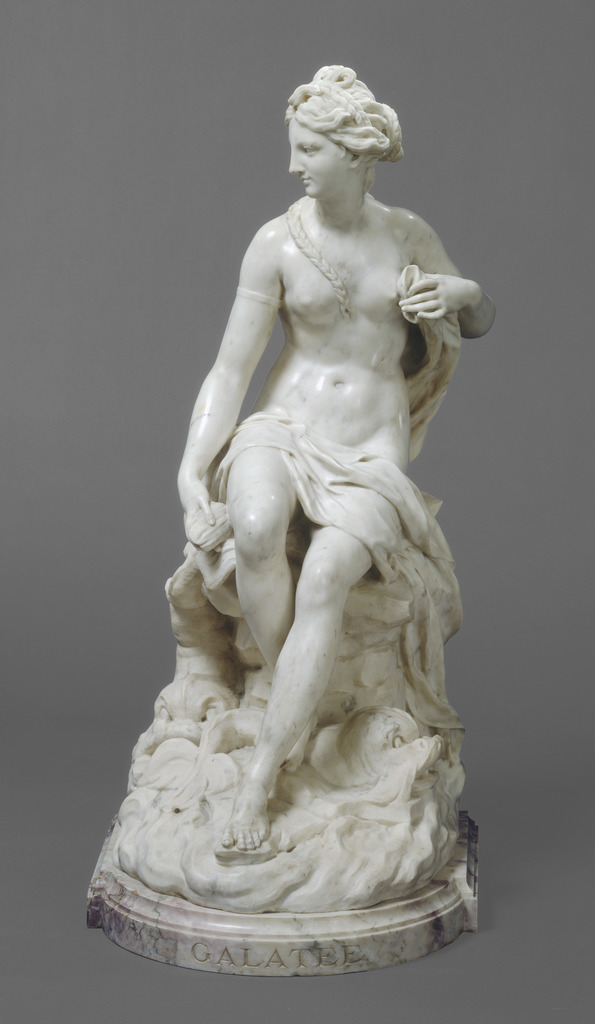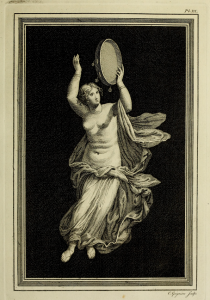 |
| Figure 1 Galatea sculpture |
 |
| Figure 2 Emma Hamilton as a Living Statue |
 |
| Figure 3 Herculaneum Dancer Painting |
Women styling themselves as living statues reveal their in depth involvement with neoclassical culture. Amelia
Rauser explores the woman body as art and as a "living statue" in her
essay, "Living Statue and Neoclassical Dress in Late Eighteenth Century
Naples". The junction of art, antiquity, and nature into a living
statue is appropriate for the neoclassical era, as Rauser describes
it as an “importing idealism of art into the physical world” (Living Statues 465). The idea of
expressing artwork in life form was an avenue to express the Enlightenment and
its attainment of human and social exactness. Figure 2 is a prime example of Emma
Hamilton as a living statue embodying
the likeness of Figure 3 the Herculaneum
Dancer and the sculpture Galatea (Figure 1). The iconography of the woman body made available in prints that circulated throughout the society also heavily influenced women to participate in the living statue demonstrations and be active observers This experiential practice of the neoclassical art demonstrates the development of new thinking and reasoning available in art and materials.The living statue served to create involvement of physical representations with physical experience.With women and their bodies being placed as the focal point of art, allowed the enlarged focus on nature and capturing beauty in natural behaviors. However, some critics viewed this type of art as lustful and condemned women for using their body as a gratifying desire. Whatever the negative reviews, the living statue will be seen as the artistic intersection of classical art and modernity.



Comments
Post a Comment